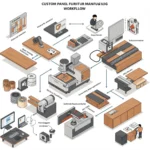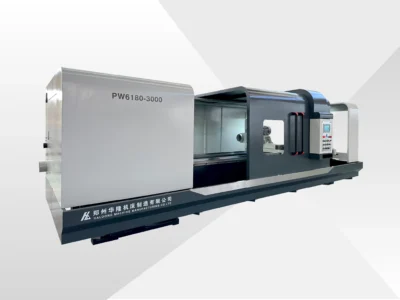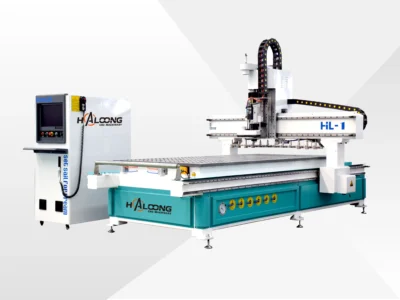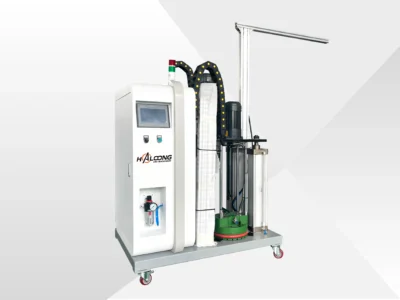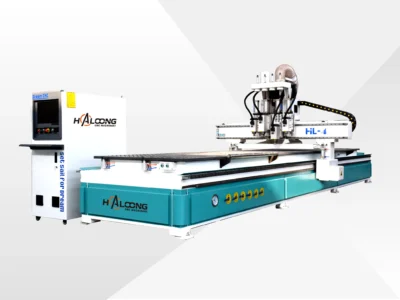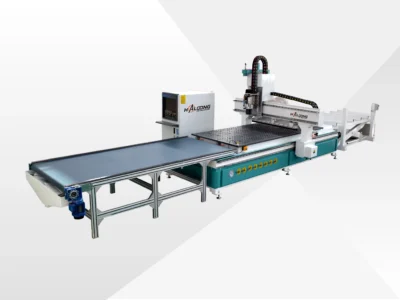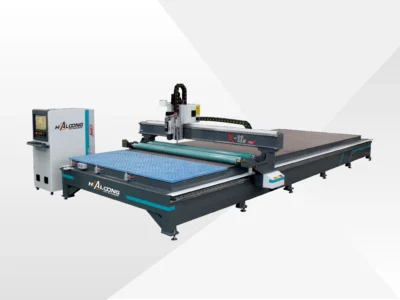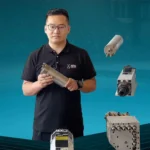
Choosing the Right Spindle for Your CNC Router: Water vs. Air Cooling | HALOONG CNC Spindle Guide Part 1
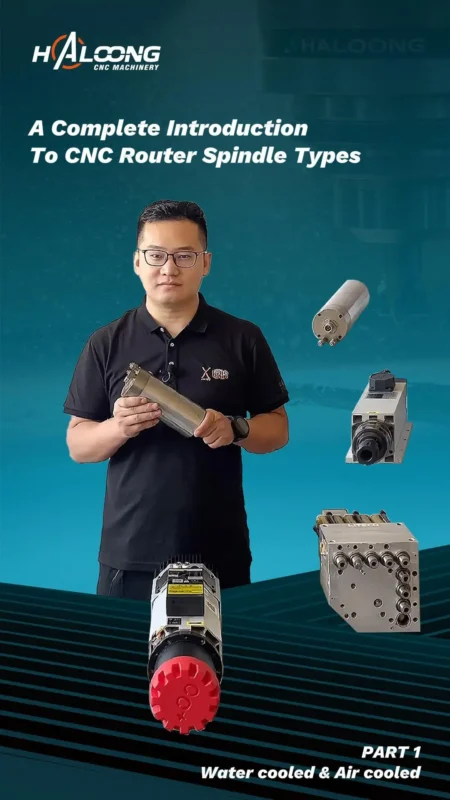
The spindle is the heart of a CNC router, the component responsible for holding and rotating the cutting tool. Its performance directly influences machining speed, precision, and the quality of the finished product. While various specialized spindles exist, most commonly found options utilize either water cooling or air cooling for heat management. Understanding the differences is key to selecting the right machine or spindle for your tasks.
In this first part of our Spindle Knowledge series, we’ll compare these two fundamental types: water-cooled and air-cooled spindles.
What is a Water-Cooled Spindle?
A water-cooled spindle is characterized by its typically smooth, cylindrical metal body. Its cooling mechanism relies on the circulation of liquid coolant. You’ll notice two ports (an inlet and an outlet) usually near the top or bottom. These connect via hoses to an external water pump and reservoir. The pump continuously pushes filtered water or a specialized coolant through internal channels within the spindle casing, efficiently absorbing and carrying away the heat generated during operation.
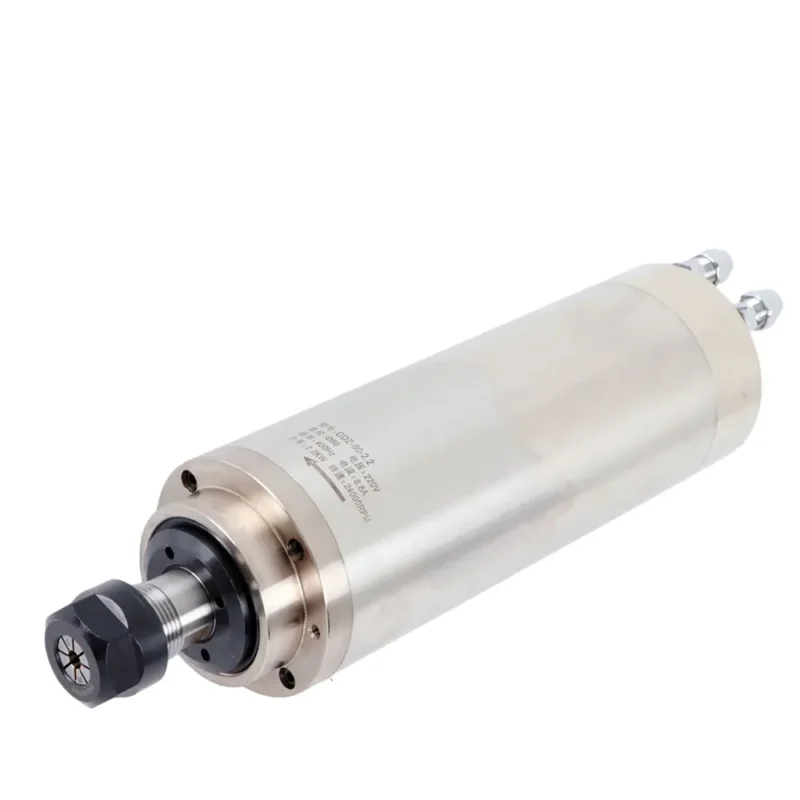
Key Advantages:
- Superior Cooling: Water circulation offers highly effective heat dissipation, crucial for demanding tasks or warm environments.
- Quieter Operation: Lacking an external fan, these spindles run significantly quieter.
- Ideal for Long Runs: Consistent cooling makes them well-suited for extended machining operations.
- Cost-Effective: Often, the initial purchase price can be lower compared to equivalent air-cooled models (though requires a pump/coolant setup).
- Typical Applications:Due to their quiet operation and stable temperature control, they are popular choices for advertising sign making, intricate relief carving, and detailed rotary axis work.
What is an Air-Cooled Spindle?
Air-cooled spindles dissipate heat using ambient air forced over the spindle body by a dedicated fan. This fan is usually integrated into the spindle assembly, often visibly located at the top under a shroud. As the spindle operates, the fan spins at high speed, creating airflow that cools the unit.
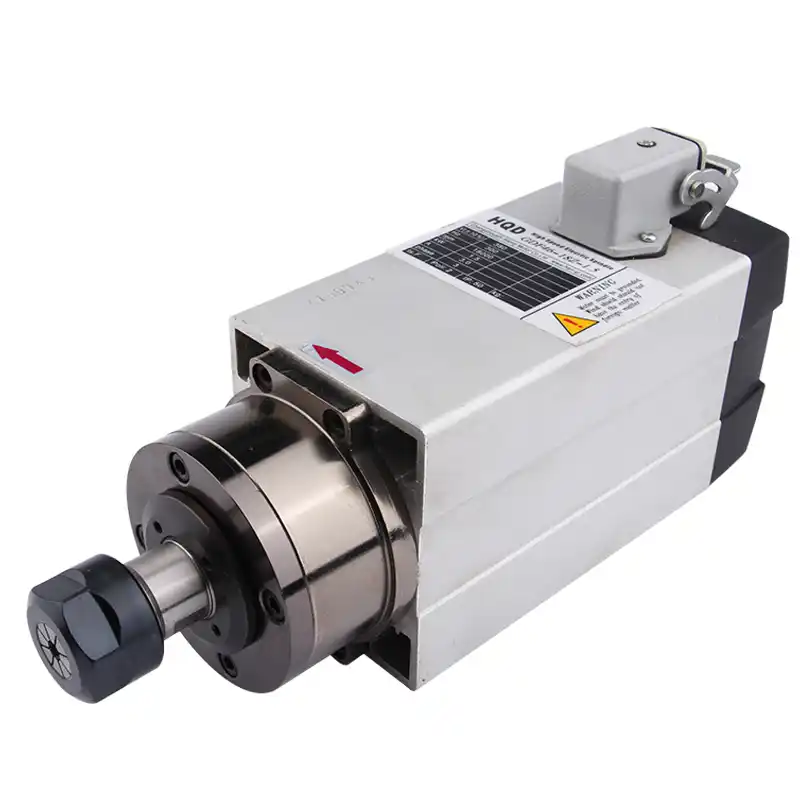
Key Advantages:
- Simpler Setup:No need for external pumps, reservoirs, or coolant management.
- Cost-Effectiveness:Can be very cost-effective, especially when considering the total system setup.
- Versatility:Widely used across various applications.
- Typical Applications:Commonly found on general-purpose CNC routers, including multi-head or multi-process machines, edge banding equipment, and machines primarily used for drilling, panel cutting, and grooving operations.
The Importance of Spindle Power
Regardless of the cooling type, the spindle’s power (rated in kilowatts, kW, or horsepower, HP) and rotational speed (RPM) are critical factors. Spindles are available across a vast spectrum, from less than 1 kW to powerful units exceeding 10 kW, with speeds ranging from a few thousand RPM to 24,000 RPM or even higher.
A more powerful spindle can handle heavier cuts and higher feed rates without getting bogged down. This means:
- Faster cutting speeds, improving productivity.
- Reduced strain on the spindle motor, potentially increasing lifespan.
- Better cut quality, helping to avoid issues like edge chipping or tool breakage, especially in demanding materials.
Which Spindle is Right for You?
Choosing between water-cooled and air-cooled depends on your specific needs, budget, work environment, and the types of materials and jobs you’ll be running. Water-cooling offers quiet, efficient cooling for long jobs, while air-cooling provides simpler, often cost-effective versatility.
Stay tuned for the next parts of our series where we will delve into ATC (Automatic Tool Changer) spindles, drilling spindles, and essential daily maintenance tips!
Related Products
HALOONG CNC Cylindrical Shaft Polishing Machine
Dual Station Table Linear ATC CNC Wood Router: Automatic Tool Changer Wood CNC for Furniture Making
Why the HALOONG 12-Tool ATC CNC Wood Router Stands Out
The HALOONG 12-Tool ATC CNC Wood Router is a high-performance wood CNC machine built for exceptional efficiency and flexibility. Its automatic tool changer (ATC) switches between 12 tools in under 5 seconds, drastically reducing downtime and boosting output. Whether you’re cutting MDF, carving solid wood, or crafting intricate designs, this CNC wood router handles it all with ease. For even greater productivity, consider our optional dual-table configuration, which allows for near-continuous operation and significantly increases throughput for demanding production schedules.
Key Features of This CNC Wood Router
Here’s what makes this wood CNC a must-have:
Ultra-Fast Tool Switching
- 12-tool linear magazine: Holds a variety of tools, ready for instant use.
- Tool changes in under 5 seconds: The gantry-integrated design cuts travel time, keeping your production moving.
Versatile Material Processing
- Works with MDF, solid wood, OSB, PVC, acrylic, aluminum, and composite panels.
- Supports standard furniture joints (e.g., dowels and cams) and modern invisible connectors (e.g., Lamello, Peanut, Lockdowel).
- Perfect for cabinets, wardrobes, doors, and artistic carvings.
Customizable Worktable Options
- Options like 4'x8' (1220x2440 mm), 4'x9' (1220x2800 mm), or custom sizes available for single-table models.
- Maximize your output with our optional dual-table configuration, allowing for continuous loading and unloading on separate work zones.
- Upgraded vacuum table locks materials securely for flawless results on both single and dual-table setups.
Effortless Operation
- User-friendly controls with a clear display, network, and USB connectivity.
- Simplified design means even beginners can master it quickly. The dual-table operation is also intuitively managed through the advanced control system.
Built to Last with Precision
- Heavy-duty steel frame and high-precision gearbox for durability.
- Servo-driven system ensures smooth, accurate cuts every time. The robust construction ensures stability even during continuous operation on the dual-table model.
Cleaner, Safer Workspace
- Integrated dust collection and air-blow system keeps debris in check.
- Ideal for continuous, high-output runs without mess, making it perfect for the increased production demands of the dual-table system.
Top-Notch Support
- Free technical support, lifetime service, and remote assistance included.
PUR Glue Machine Kit For Edge Bander
Four-Spindle Dual-Station CNC Wood Router for Panel Furniture Manufactured
Maximize your panel furniture manufacturing throughput with the HALOONG Four-Spindle Dual-Station CNC Router. Expanding on the reliability of our single-station four-spindle CNC wood cutting machines, this dual-station system provides a substantial increase in production efficiency. It's designed for continuous operation, minimizing downtime and maximizing output through its smart workflow.
The clever dual-station workbench facilitates seamless alternating work cycles. While one station is engaged in machining, the operator can efficiently prepare the next batch of materials on the adjacent station. Upon completion of the first cycle, the machine instantly transitions to the pre-loaded second station. This continuous processing approach ensures no wasted time, making it a key asset for high-volume furniture production.


